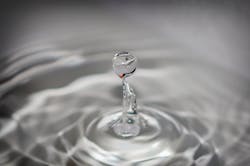About the author:
Cristina Tuser is Associate Editor for WWD. To contact, please email [email protected]
Organic fouling of an anion-exchange resin occurs (AERs) through the adsorption of the organics on its surface, which block the diffusion of mobile ions inside the resin beads.
Organic acids are the humic acids produced by the decay of vegetable matter and are commonly found in surface water supplies, according to American Water Works Association.
When these organic acids accumulate, this limits the capacity of the resins for further exchange of the acids and inorganic ions present in raw water.
Fouling of anion-exchange resins by organic materials is typically caused by the degradation of the products of cation ion exchangers and humic and fulvic acids.
The effective application of anion exchange resins has been limited by resin fouling, which increases the volume of the desorption concentrate and decreases treatment efficiency.
Resin fouling has not been well studied compared to membrane fouling.
History of Anion Fouling
Before anion fouling came the development of a sulfonated coal cation exchange medium, carbonaceous zeolite. This extended the application of ion exchange to hydrogen cycle operation and an anion-exchange resin was developed thereafter.
The anion resin was used with the hydrogen cycle cation resin to demineralize water, but early anion exchangers were unstable and could not remove weakly ionized acids.
Anion exchange processes have received increased interest in recent years as efficient alternatives for removing disinfection byproduct precursors.
How Can Fouling Be Prevented?
Fouling decreases the efficiency of heat exchangers, impedes fluid flow, accelerates corrosion and more. This ultimately increases maintenance and forces shutdowns.
Organic fouling causes product water with low quality and few anion exchangers and shortens the service time. It was found that even small concentrations of humic acid resulted in a considerable amount of capacity losses in anion-exchange resin.
The most important technique to prevent fouling appears to be the limiting of organic accumulation on the resins.
Further mitigation against fouling includes frequent brining and the use of scavenger beds.
Brine cleaning is an effective treatment for removing organic contaminants on strong and weak base anion resins in demineralizers, organic traps and dealkalizer units.
